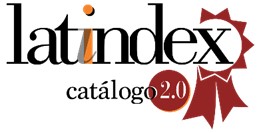Desarrollando habilidades de modelización matemática temprana en Educación Infantil: un análisis comparativo en 3 y 5 años
DOI:
https://doi.org/10.48489/quadrante.23654Palavras-chave:
Modelización Matemática Temprana, ciclo de modelización, desarrollo de habilidades de modelización, práctica docente, Educación InfantilResumo
Se comparan dos actividades de Modelización Matemática Temprana (MMT) realizadas por un mismo grupo de alumnos en 3 años y en 5 años respectivamente, con el propósito de analizar las habilidades que van desarrollando los niños y las niñas de Educación Infantil para crear modelos. En ambos casos, la actividad se ha diseñado a partir de un ciclo de modelización de siete fases (Comprensión, Estructuración, Matematización, Trabajo Matemático, Interpretación, Validación y Exposición/Presentación) y ha sido analizada a partir de la Rubric for the Evaluation of Mathematical Modelling Processes (REMMP), con indicadores específicos para la Educación Infantil. Los resultados muestran que, progresivamente, el alumnado de las primeras edades va desarrollando habilidades específicas para crear modelos concretos en función de los conocimientos matemáticos que movilizan. Se concluye que, para promover el desarrollo de habilidades de modelización matemática temprana, es necesario implementar de forma sistemática este tipo de prácticas en el aula desde los primeros niveles de escolarización.
Referências
Alsina, Á., & Salgado, M. (2020). Early mathematical modelling: First steps in the process of translation between real-world contexts and mathematics. Manuscript submitted for publication.
Alsina, Á., & Salgado, M. (2021). Introduciendo la modelización matemática temprana en educación infantil: Un marco para resolver problemas reales. Modelling in Science Education and Learning, 14(1), 33-56. https://doi.org/10.4995/msel.2021.14024
Alsina, C. (2011). Modelización para formar ciudadanos. Modelling in Science Education and Learning, 4(1), 5-14. https://doi.org/10.4995/msel.2011.3051
Andrade, H. G. (2000). Using rubrics to promote thinking and learning. Educational Leadership, 57(5), 13-18.
Bliss, K., & Libertini, J. (2019). What is mathematical modeling? In S. Garfunkel & M. Montgomery (Eds.), Guidelines for assessment & instruction in mathematical modeling education (pp. 7-21). Consortium for Mathematics and Its Applications and Society for Industrial and Applied Mathematics.
Blum, W., & Borromeo-Ferri, R. (2009). Mathematical modelling: can I Be taught and learn? Journal of Mathematical Modeling and Application, 1(1), 45-58.
Blum, W., & Leiβ, D. (2007). How do students and teachers deal with modelling problems? In C. Haines, P. Galbraith, W. Blum & S. Khan (Eds.), Mathematical Modelling: Education, engineering and economics (pp. 222-231). Cambridge, UK: Woodhead Publishing Limited.
Common Core Standards Writing Team (2013). Progressions for the common core standards in mathematics (draft) High school, Modeling. Arizona: Institute for Mathematics and Education, University of Arizona.
Common Core State Standards Initiative [CCSSI] (2010). Common core state standards mathematics. Washington D.C., USA: National Governors Association Center for Best Practices; Council of Chief State School Officers.
English, L. D. (2006). Mathematical modeling in the primary school: Children's construction of a consumer guide. Educational Studies in Mathematics, 63, 303-323. https://doi.org/10.1007/s10649-005-9013-1
English, L. D. (2010). Young children's early modelling with data. Mathematics Education Research Journal, 22(2), 24-47. https://doi.org/10.1007/BF03217564
English, L. D., & Watson, J. (2018). Modelling with authentic data in sixth grade. ZDM Mathematics Education, 50, 103-115. https://doi.org/10.1111/j.1751-5823.1999.tb00442.x
English, L. D., & Watters, J. J. (2005). Mathematical modelling in the early school years. Mathematics Education Research Journal, 16(3), 58-79. https://doi.org/10.1007/BF03217401
Ferrer, M., Fortuny, J. M., & Morera, L. (2014). Efectos de la actuación docente en la generación de oportunidades de aprendizaje matemático. Enseñanza de las Ciencias, 32(3), 385-405. http://dx.doi.org/10.5565/rev/ensciencias.1231
Kaiser, G., Blomøj, M., & Sriraman, B. (2006). Towards a didactical theory for mathematical modeling. ZDM Mathematics Education, 38(2), 82-85. http://dx.doi.org/10.1007/BF02655882
Hirsch, C., & McDuffie, A. (2016). Annual perspectives in mathematics education 2016: Mathematical modeling and modeling mathematics. Reston, VA: National Council of Teachers of Mathematics.
Kaiser, G., Blum, W., Borromeo-Ferri, R., & Stillman, G. (Eds.) (2011), Trends in teaching and learning of mathematical modelling. New York, USA: Springer.
Lawshe, C. H. (1975). A quantitative approach to content validity. Personnel Psychology, 28(4), 563-575. https://doi.org/10.1111/j.1744-6570.1975.tb01393.x
McMillan, J. H., & Schumacher, S. (2005). Investigación educativa 5ª edición. Madrid, España: Pearson Educación, S.A.
National Council of Teachers of Mathematics [NCTM] (1989). Curriculum and evaluation standards for school mathematics. Reston, VA, USA: NCTM.
National Council of Teachers of Mathematics (2000). Principles and standards for school mathematics. Reston, VA, USA: NCTM.
Ruiz-Higueras, L., & García, F. J. (2011). Análisis de praxeologías didácticas en la gestión de procesos de modelización matemática en la escuela infantil. Revista Latinoamericana de Investigación en Matemática Educativa, 14(1), 41-70.
Ruiz-Higueras, L., García, F. J., & Lendínez, E. M. (2013). La actividad de modelización en el ámbito de las relaciones espaciales en la educación infantil. Edma 0-6: Educación Matemática en la Infancia, 2(1), 95-118.
Stillman, G. A., Blum, W., & Biembengut, M. S. (Eds.) (2015). Mathematical modelling in education research and practice: Cultural, social and cognitive influences. Cham, Switzerland: Springer.
Stillman, G. A., Blum, W., & Kaiser, G., (Eds.) (2017), Mathematical modelling and applications: Crossing and researching boundaries in mathematics education. Cham, Switzerland: Springer.
Stillman, G. A., Kaiser, G., Blum, W., & Brown, J. P. (Eds.) (2013). Teaching mathematical modelling: connecting to research and practice. Cham, Switzerland: Springer.
Stillman, G. A., Kaiser, G., & Lampen, C. E., (Eds.) (2020). Sense-making in mathematical modelling and applications educational research and practice. Cham, Switzerland: Springer. https://doi.org/10.1007/978-3-030-37673-4_2
Suh, J. M., Matson, K., & Seshaiyer, P. (2017). Engaging elementary students in the creative process of mathematizing their world through mathematical modeling. Education Sciences, 7 (62), 1-21. https://doi:10.3390/educsci7020062
Toalongo-Guamba, X., Alsina, Á., Trelles-Zambrano, Z., & Salgado, M. (2020). Creando los primeros modelos matemáticos: Análisis de un ciclo de modelización a partir de un problema real en educación infantil. Manuscript submitted for publication.
Toalongo-Guamba, X., Trelles-Zambrano, C., & Alsina, Á. (2020). Design, construction and validation of a rubric to evaluate mathematical modeling in the different educational stages. Manuscript submitted for publication.
Trelles-Zambrano, C. & Alsina, Á. (2017). Nuevos conocimientos para una educación matemática del S. XXI: Panorama internacional de la modelización en el currículo. UNIÓN, Revista Iberoamericana de Educación Matemática, 51, 140-163.
Tristán-López, A. (2008). Modificación al modelo de Lawshe para el dictamen cuantitativo de la validez de contenido de un instrumento objetivo. Avances en Medición, 6, 37-48.










